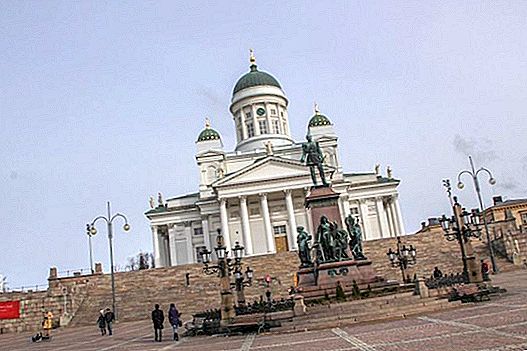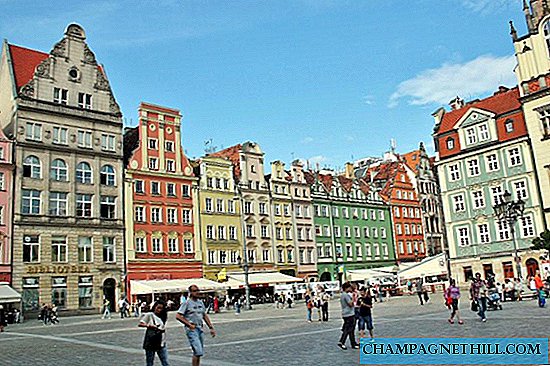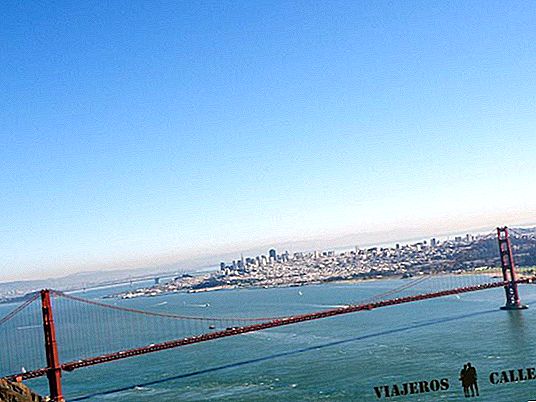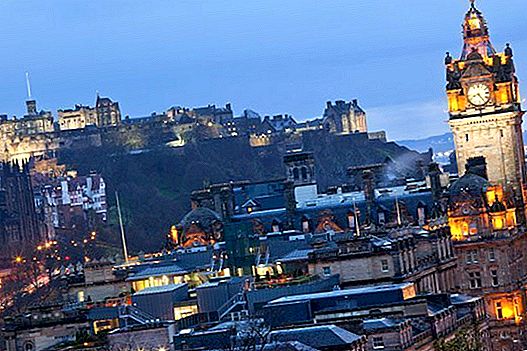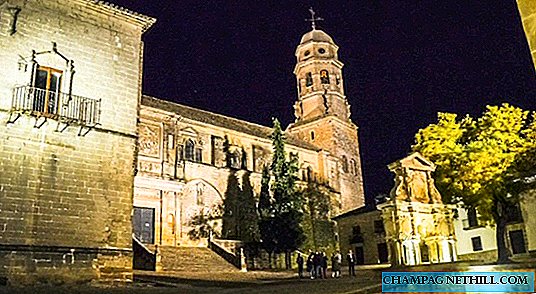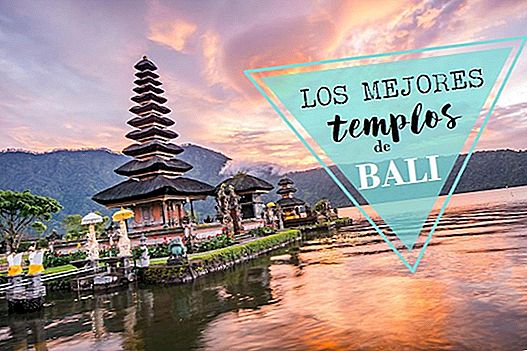
Bali is the only island in all of Indonesia that is not Muslim. The 90% of Balinese are Hindu, but not in the traditional Indian way. In Bali they profess their own and unique Hinduism in the world, full of very interesting rituals, festivities and ceremonies.
Religion is present in the daily life of the Balinese, in every house there is a small altar where you can pay tribute to the spirits, the gods and the ancestors. It is usually placed in the northeast corner of the house. In addition, each town has at least 3 temples where they can pray and place bids and offerings. Today we are going to tell you what they are the best temples in Bali, but before we tell you a little more about them.
(entry updated January 2019)
The temples (or Pure) in Bali they are the fundamental element of the community. In addition to being the sacred places where locals go to perform their rituals, they are one of the most important tourist attractions in Bali. Its design is very characteristic and unique in the world, with its split doors (candi bentar) and its sanctuaries (merus) built on different levels or roofs.
They generally share the same structure, consisting of an outside area (Nista Mandala), the central area where most of the temple activity takes place (Madya Mandala) and the most sacred area of the temple and with the tallest buildings (Utama Mandala).
In Bali there are many temples, but nine are especially important, as they are said to protect the island and its inhabitants from evil spirits. They are called Directional Temples (Kayangan Jagat) and are located in strategic points of the island such as: mountains, cliffs, caves, etc.
The nine directional temples They are:
- Pura Besakih, on the western slope of Gunung Agung, in eastern Bali.
- Pura Lempuyang, located on the slopes of Gunung Lempuyang, near Amlapura.
- Pura Luhur Batukaru, located on the south side of Gunung Batukaru, in the center of Bali
- Pura Luhur Uluwatu, located at the western end of the Bukit Peninsula.
- Pure Pass Agung, located on the southern slope of Mount Gunung Agung.
- Pura Ulun Danu Bratan, located in Bedugal, in the central highlands.
- Pura Ulun Danu Batur, which is located in Kintamani, in the eastern highlands.
- Pura Masceti, located on the south coast, near Ketewel.
- Pura Goa Lawah, located on the main road near Padang Bai, in eastern Bali.
But there are a number of temples scattered throughout the island that, either because of their historical or religious importance, or because of their aesthetic beauty, are the most recommended to visit. Here we leave you the best temples in Bali.
This Hindu temple is possibly the most photographed in all of Bali. It is so touristy because of its proximity to Kuta (a half hour drive). Its charm lies in its location, on top of an islet a few meters from the cliff. Up to this point, a large number of pilgrims are attracted by the many legendary stories that are told about him.
According to popular tradition, thousands of snakes live at the base of this temple that defend it from intruders, which does not affect the number of tourists who "invade" it is increasing. In addition it is also believed that the spring that sprouts in the cave under the islet carries Holy water and it is used by the monks to practice the "Balinese baptism" ceremony.
Unfortunately for non-Hinduists the entrance to the interior of the temple is prohibited, but if you are lucky and the tide is low, you can cross to the islet where it rises. If you do be very careful, because the rocks can be slippery. In the surroundings of the temple a great bazaar has been set up where you can buy some tacky souvenir and other local crafts at very varied prices.
- The entrance to the temple costs 60,000 IDR plus 2,000 IDR for motorcycle parking.
Commemorates the visit to this area of the priest Nirartha, who, according to legend, crossed the Pulaki forest escorted by a group of monkeys. As a sign of respect this rose temple that the monkeys seized. It is also said that Nirartha's daughter was persecuted by the king and found here the perfect place to hide.
Today it is still home to a group of harmless monkeys, who will look at you with that little face of "do you have anything to eat?" It is located a few meters from the sea on a hill from whose top there are beautiful views. Going up the stairs you reach the central courtyard where the Balinese perform their prayers and offer their offerings.
- Admission is 15,000 IDR.
This Buddhist temple is considered the little brother of Borobudur temple, in Java, for its bells made of black stone. Its structure on different terraces makes it very attractive. The monastery has numerous meditation rooms and open gardens, it is a place where you can breathe peace and harmony, even for non-Buddhists. Be sure to go up to the last level and visit the main pagoda. The return is done on a road with beautiful views of the coast through the trees. Spiritual retreats can be made for a few days.
- To enter it is recommended to give a donation.
It is undoubtedly the most famous because it hosts what we can call "Bali postcard”: A Balinese temple with different roofs (or merus) that emerges from the waters of a volcanic lake surrounded by mist in an incomparable mountain setting. Built in 1663, it is dedicated to the goddess Dewi Danu, in charge of protecting the lake's water as a symbol of fertility and prosperity. Leaving aside its outer beauty, this temple is especially important among the surrounding peasants who come to it on a pilgrimage begging for water and climate conducive to their crops.
It is probably one of the most beautiful temples in Bali, and therefore you will have to share the visit with a good group of tourists. In summary a beautiful temple in a movie frame but perhaps something lacking the spirituality characteristic of places of worship.
- Admission is 50,000 IDR.
Not far from the Jatiluwih rice paddies and at the foot of the sacred mountain Batukaru (second highest volcano on the island) is the Luhur Batukaru temple, one of the largest Hindu temples in Bali and the less touristy. It is one of the nine directional temples or "kayangan jagat", in charge of protecting Bali from evil spirits. Although its architecture is not spectacular, It is an especially sacred place for Balinese Hindus and important pilgrimage point.
The environment, in the middle of a lush rainforest, between bamboos, ferns and banana trees, all surrounded by an intense mist, give it a mystical and sacred character. To all this is added its remote location, far from residential areas, which make it an ideal place to perform more intimate cults and make it especially attractive.
Founded in the eleventh century, it was destroyed in 1604 and later rebuilt in 1959. It is composed of different shrines (merus) dedicated to the ancestors of the Tabanan dynasty, the most important being that of Mahadewa, god of the mountain. In addition there are several secondary roads that lead to beautiful adjacent gardens and a pond with an islet where two merus rise. Throughout the complex you can see the beautiful religious stone sculptures covered with moss. Some of the enclosures are prohibited for tourists.
- The entrance is 30,000 IDR although it is simply for the rental of the sarong, if you carry your own you can access without problems.
It's really a tombs and temples complex built in the 11th century and dedicated to King Udayana and his family (including a few concubines). Has 10 rock carved sanctuaries, of a height of up to eight meters, arranged at the edge of a small river, in a valley with a very calm and pleasant natural environment. Access is not easy, first you will have to survive the ubiquitous vendors and their stands, and then descend some 300 steps down a road through rice fields. The really difficult thing is to ascend them, especially if while you almost vomit your soul through your mouth, a group of women overtake you carrying rocks on their heads as if such a thing. If you are not fit, take some time to pray in front of the temples before starting the climb.
As it descends, the first sight are impressive sculptures carved into the mountain, before cross a bridge until you reach the sanctuaries, where you will have to wet your head with holy water as part of the ritual. Legend has it that the entire group of monuments was carved into the face of the rock by the claws of giant Kebo Iwaen in one night. The truth is that the place is certainly mysterious and will easily transport you to a remote time.
- The entrance to this hidden treasure is 15,000 IDR.
A short distance from the Gunung Kawi is this Hindu temple, whose waters are believed to have healing properties. According to legend, it was on this site where the celestial army of the god Indra fell defeated against his great enemy Maya Danawa. Then Indra struck the rock with such force that it emanated from it a spring whose waters restored its troops and finally managed to win the battle. The popular belief that gives the place a magical character dates back more than a thousand years and today continues to be maintained, being a site very visited by the locals, who come to perform their purification rituals.
The enclosure is formed by a set of sanctuaries and pools, and although neither the pavilions nor the sculptures are exceptional, it is a good place to learn more about Balinese culture. You can live the experience yourself and enter the pool, just imitate the behavior of the locals to not act offensively. Although they will not make you immortal, a bath in these refreshing waters never hurts when there are 35 degrees outside. Once you get out of the water you can change in the bathrooms, do not forget to bring extra clothes! This is where the former president Sukarno built his residence, in 1950. Be careful, don't miss one of the last pools (closed) where you can see how the gas comes from deep in the earth!
- Admission is 15,000 IDR.
Is considered the most important temple for the Balinese and even thousands of pilgrims approach each day carrying their careful offerings. Is a set of 24 sanctuaries spread over the skirts of the Agung volcano (the highest mountain on the island), more than 1,000 meters high.
Built before the year 1,000 in honor of the dragon god Besakih, who lived in the sacred mountain, around him many legends are told, one of them says that it is the place where the gods rest when they descend to the earth. Perhaps they were responsible for saving the temple from the devastating eruption of the volcano in 1963. It has three main altars dedicated to the gods Shiva the destroyer, Brahma the creator and Vishnu the preserver, around which another 18 sanctuaries are arranged in a vast area of 2.5 square kilometers.
In addition to pilgrims we will find many tourists, so the scammers and vendors in the surroundings is inevitable. Have your ideas clear and do not be fooled, the temple can be entered without a guide and although many of the pavilions are reserved for worship and remain closed to the tourist, they will continue to be so for much "official guide" to accompany you. It is best to climb the side ladder to avoid fights and once up, cross to the main courtyard. Ah! Keep in mind that donations must be voluntary, no matter how much they stun you. You may be disappointed by the mob they have organized around this sacred place, but objectively it is worth a visit.
- Admission costs IDR 60,000 to be paid at a booth before arriving at the parking lot.
The name literally means "waters of the Ganges." They are a set of ponds around a palace built in 1948 by the king of Karangasem, taking advantage of the sacred waters of a nearby spring. It was destroyed almost entirely by the eruption of 1963 and rebuilt delicately, respecting the Balinese, Chinese and European styles of origin. It is a must see because perhaps it is the best water palace in Bali.
A walk between its landscaped courtyards, mansions, swimming pools and mythological statues is a good plan to disconnect from everything for a few moments. You can even walk over the pools by jumping on octagonal platforms (for those of us who have grown up with Yellow Humor, they will remind us a lot of the mythical “zamburguesas”). You will see firsthand the huge size of the koi fish swimming at your feet under your feet. further it is possible to dive into the same pool where the Raja de Karangasem was bathing for an additional 10,000 IDR supplement.
- The entry is 20,000 IDR.
One of the nine key directional temples of the island, on top of Mount Lempuyang, at 1,058 meters high. To reach it you have to ascend for nothing more and nothing less than 1,700 stairs! (Not without reason this site is also known as "The temple of a thousand steps").
From the parking lot you have to take a path for 20 minutes to the first temple, where the dragon stairs begin. On the ascent, 6 more temples are passed until you reach the last, on top: the Lempuyang Luhur temple. The architecture is not especially interesting if other temples have already been visited on the island, but the effort is well worth it when, once up, you find yourself listening to the sound of the bells beaten by the priest in the small temple before wonderful views from both sides of the island, with its two seas and a volcano in front.
It is not documented when it was built exactly. Legends say that when Mother Earth was only 70 years old, the island of Bali was unstable and earthquakes happened every day. The god Pacupati, who lived on Mount Semeru (the highest mountain in Java), thought that the best way to cure this disease was to send his three children to three different places in Bali: Dewi Danu on Mount Batur, Hyang Putra Jaya on Mount Agung and Hyang Gni Jaya in the Lempuyang Luhur Temple.
It is a place very little frequented by tourists, what if there are many monkeys They can become dangerous. Carrying a large stick to scare them can help you to follow your path, although there are a couple of guards to protect the pilgrims. The ascent is done in an hour or two, it is not necessary to be an ironman, just take your time and climb at your own pace, making the stops you think necessary to take your breath along the way. It is recommended to bring drinks and something to eat, although there are vendors on the road from time to time.
- Admission is free although it is not bad to leave a small donation.
Named for hosting a cave home of thousands of these animals and of the legendary giant snake Naga Basuki, which feeds on them. They say that the cave connects to the Pura Goa temple, in the immediate vicinity of Besakih, 30 km away, through an underground river. However, no one has volunteered to confirm this theory, for fear of being snake grass. Small sanctuaries have been built around the cave around a central courtyard.
- Entrance to the site costs 15,000 IDR.
This temple, in the southwest corner of the Bukit PeninsulaIt is one of the three most important sanctuaries for the Balinese and one of the nine directional temples. Its name means "on top of the rocks" and refers to its impossible location, hoisted over a steep cliff 100 meters above the ocean, which make it unique.
In reality, the environment is the best of the temple, since the shrines remain closed for tourists and you can only see them from outside. Although the ascent and the little walk through the gardens is interesting. The first who will come to receive you will be the monkeys that inhabit the place, which, although they seem very cute, will not miss the opportunity to steal your food and everything you carry. Try not to bring to the naked eye anything that appeals to you, such as a cap, glasses, earrings, cameras ... if the tragedy occurs, you can always tip any of the guards to try to recover the stolen object, they are delighted!
If you want to visit it after visiting one of the beaches in this area you can contemplate one of the best sunsets on the island and attend a Kecak dance show in the immediate vicinity of the temple every evening at 6pm.
- The entrance to the temple costs 40,000 IDR.
Here we leave you an interactive map with the best temples in Bali.
→ If you plan to visit Bali, perhaps our book “Bali guide on Moto” can help you.
→ Be sure to read our Bali guide for backpackers!
→ And all the information of Indonesia, visa, when to go, currency, reference prices, budget, how to move, etc.

Our recommendations
Flights Cheap to Bali: //bit.ly/2Jvsb9C
accommodation Cheap in Bali: //booki.ng/2Mc581r
Stay withAirbnb and get€ 25 discount: //www.mochileandoporelmundo.com/ir/airbnb
Activities in Spanish in Bali: //bit.ly/2LItf6z
Rent a car with the best discounts: //bit.ly/2xGxOrc
Travel insurance IATI with a5% discount: //bit.ly/29OSvKt
Articles about Bali
- THE 15 BEST THINGS TO SEE AND DO IN CANGGU
- THE 8 BEST BEACHES OF BALI (FOR BATHING AND SURFING)
- TRAVEL GUIDE TO NUSA PENIDA: ALL THE INFO YOU NEED
- 7 RESTAURANTS WHERE TO EAT IN UBUD WELL AND CHEAP
- 20 THINGS TO SEE AND DO IN UBUD
- GILI ISLANDS: TRAWANGAN, MENO, AIR WHAT TO CHOOSE?
- THE BEST TEMPLES OF BALI
- TIPS FOR TRAVELING TO BALI (AND DON'T FALL IT)
- WHAT TO DO IN THE GILI ISLANDS
- HOW TO GET TO THE GILI ISLANDS FROM BALI
- 35 THINGS TO SEE AND DO IN BALI
- BOOK: MOTORCYCLE BALI GUIDE
- BALI TRAVEL GUIDE FOR BACKPACKERS

